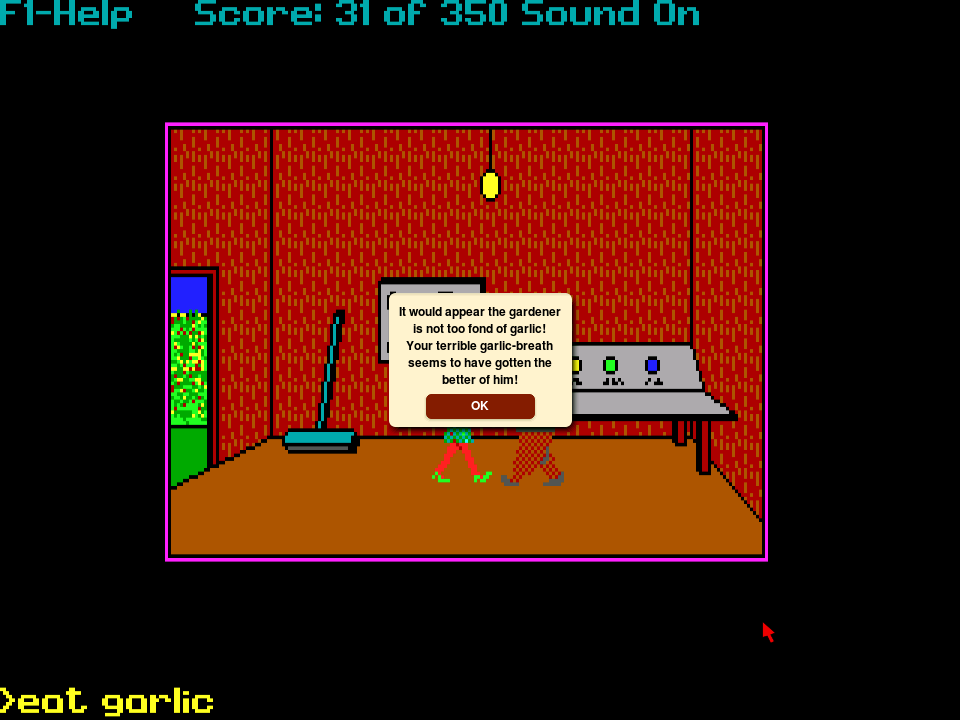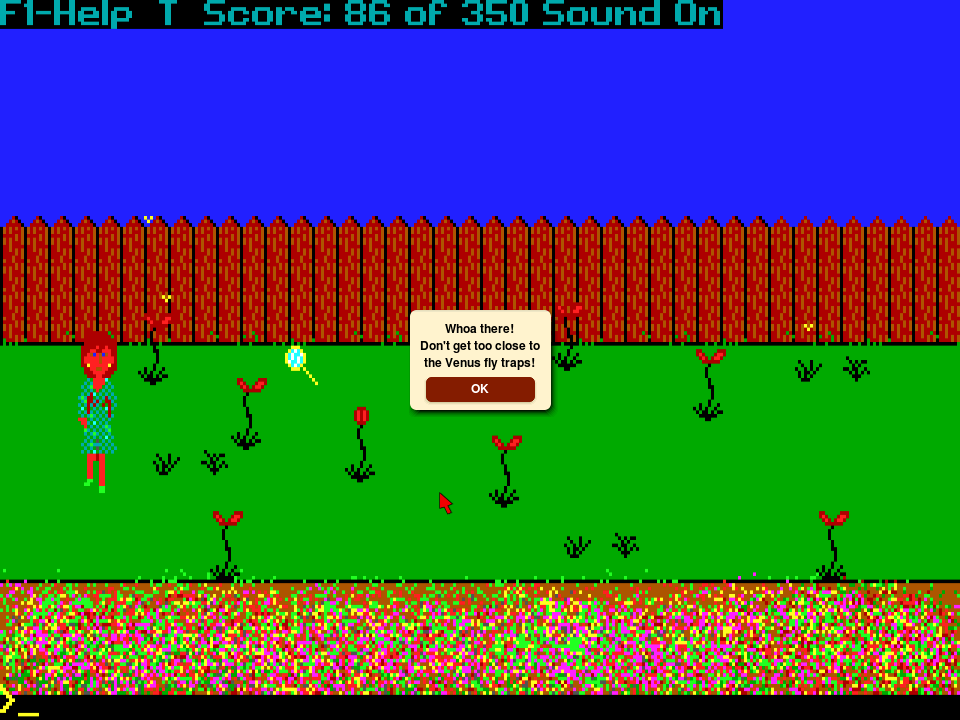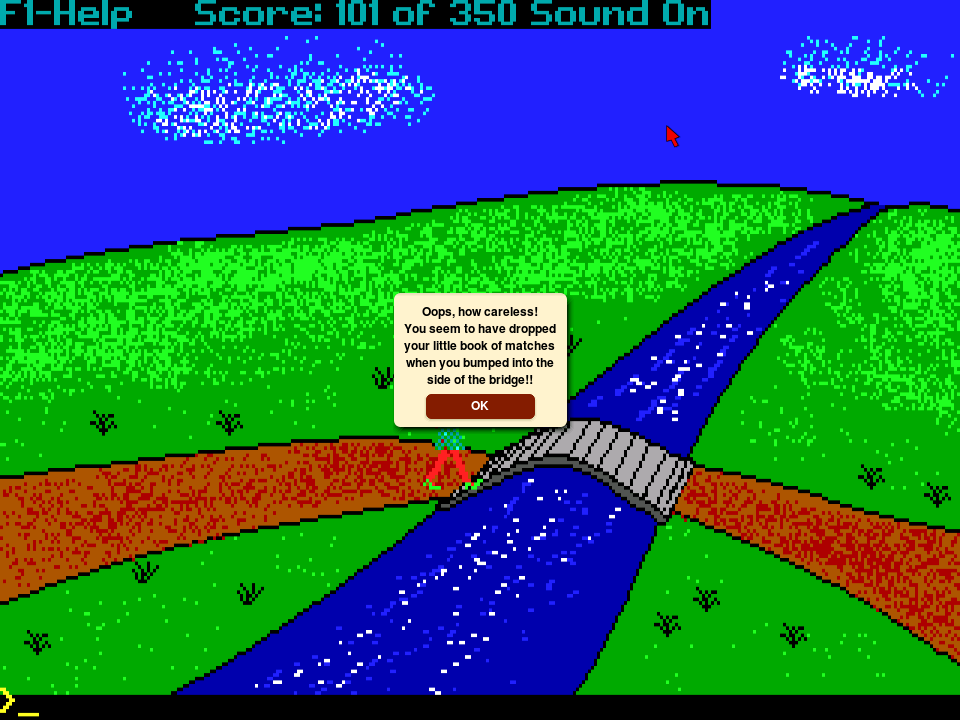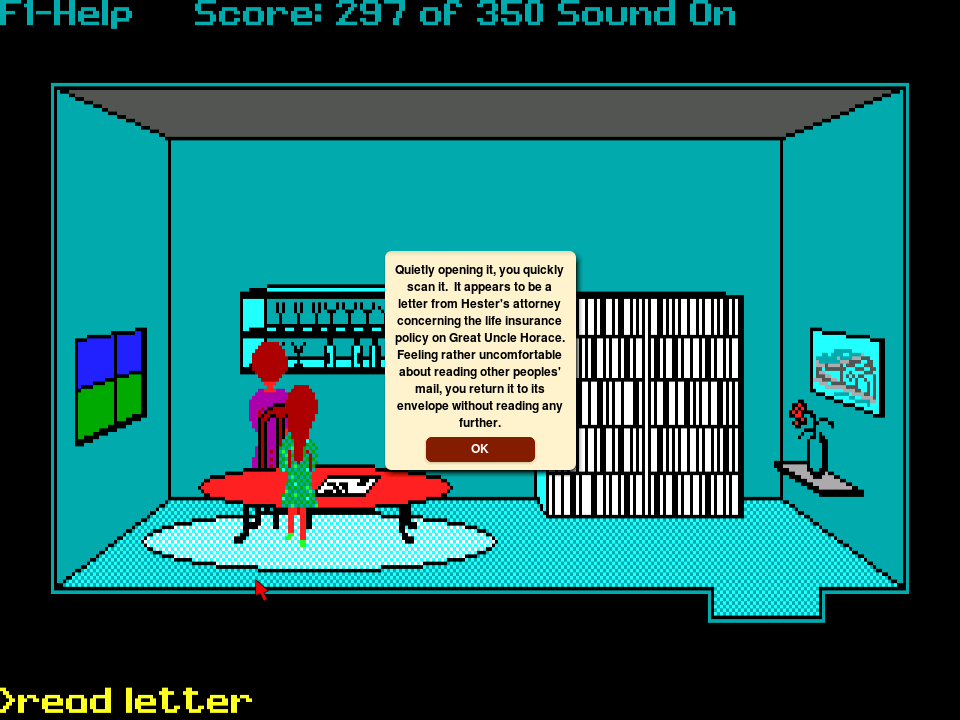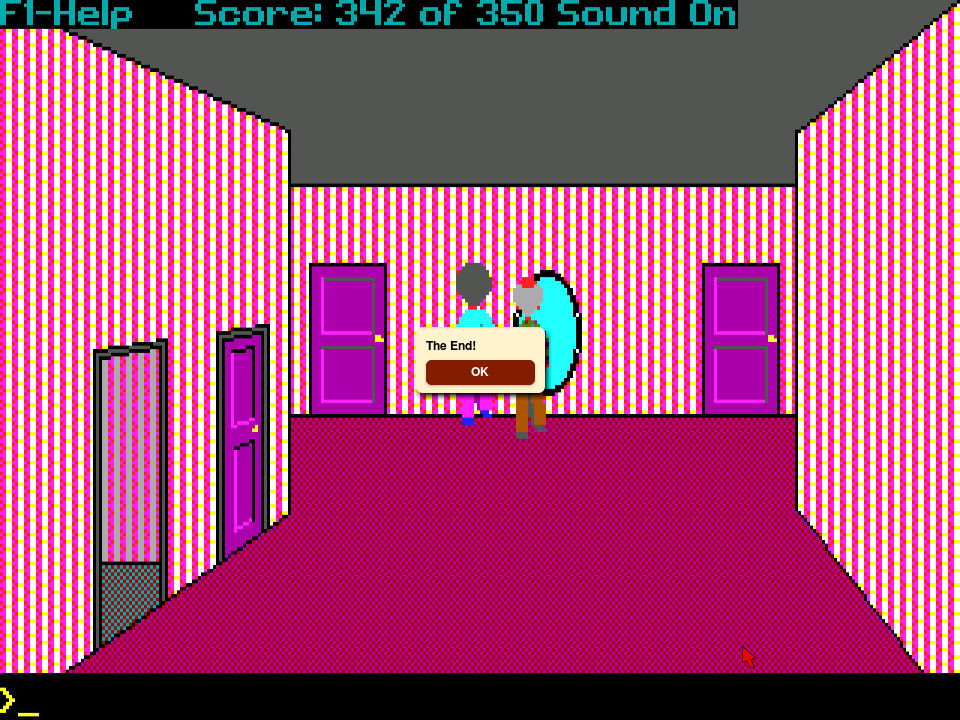Hugo II, Whodunit? (Gray Design Associates) - 1991
Series: Let's Adventure! A Journey into Adventure Games (1980-1999)This review is part of the Let's Adventure! series. See all reviewed games sorted by rating here.
- ← The Secret of Monkey Island (Lucasfilm Games) - 1990
- Hugo II, Whodunit? (Gray Design Associates) - 1991
- → Normality (Gremlin Interactive) - 1996
Article 77 of 101 in this series.
Hugo II, Whodunit? (named Hugo’s Mystery Adventure in the Hugo Trilogy re-release) is a parser-based adventure game designed by independent software developer David P. Gray and published as shareware by Gray Design Associates in 1991. It is the sequel to 1990’s Hugo’s House of Horrors, and it was followed by Hugo III, Jungle of Doom! in 1992.
Hugo and his wife, Penelope, arrive to stay at the mansion that belongs to Hugo’s Great Uncle Horace. Penelope falls asleep in the bedroom, while Hugo accidentally finds a bookcase passage and is locked in a secret room. Penelope wakes up, only to witness Uncle Horace’s murder through the keyhole. The player controls Penelope (and later, briefly, Hugo) and must solve the murder.1
This title improves slightly on the original as moving the mouse around the screen will occasionally highlight character or object names. This is a cue as to something you should type into the text parser to interact with (ex: LOOK BOOKCASE).
Once you lie down and Hugo disappears, you’ll gain control of Penelope - who is the main character on this adventure.
As you work your way through the Uncle Horace’s property you’ll meet a couple NPCs that you can interact with. These interactions are extremely limited (they’re not dialogue trees) and typically don’t advance the plot - they just serve as puzzles as you typically need them to move so you can progress.
Since I’m playing this game in ScummVM, the original text boxes have been replaced by UI modals - which IMHO look awful. Apparently a “nice to have” on the Hugo/TODO page is implementing the original dialog boxes … so maybe one day.
In a couple areas you need to navigate the screen using almost pixel-perfect navigation to either keep yourself from dying, or getting into an unwinnable situation.
The venus fly trap screen requires you to walk through a “maze” in order to get a magnifying glass. The hit boxes for these plants are massive though, so you’ll die many times trying to get through this.
When you get past the venus fly traps you’ll need to cross a bridge, but if you accidentally touch the “edges” of the walkable area you’ll drop your matches and they’ll get wet.
If this happens, you won’t be able to light a stick of dynamite later in the game.
Luckily this game is very short, so if you happen to get yourself into this situation it’s really only a matter of backtracking about 30 minutes of play time to get yourself to that point from an earlier save.
To progress through the mid-portion of the game you need to press various buttons in the shed to trigger certain events. These can’t be done until you first walk all the way to the screen where the event will occur, then walk back and press the button.
For example, you can’t turn on the bug light to attract the bees until you’ve “been there” once.
Since you’ll be doing a lot of backtracking it is appreciated that this game has a “Turbo” mode that makes Penelope walk twice as fast.
This is especially helpful when you have to navigate through the hedge maze (oh goody … a maze). Thankfully this isn’t all that big and is easy enough to map out, but given the limited colour palette of this game this section is a little hard on the eyes.
The maze exists to hide a couple items you’ll need to collect to proceed - which honestly sums up most of this game. A good portion of the game’s screens contain items that you’ll need to use exactly once to solve a single puzzle.
This is fairly simplistic game design, but I can’t fault David P. Gray as he single handedly wrote a trilogy of games that he even went into technical detail about for anyone that was interested.
To add some flavour there are timing-based puzzles as well. For example, if you place and light the dynamite you have a fixed amount of time to get out of the well before it explodes and kills you.
Though there aren’t many game over scenarios, they are possible so it’s worth saving every few screens just so you don’t have to backtrack too far when you mess up.
The narrative of this game is a little disjointed, like when you step into a phone booth, call a number you just saw written in graffiti and meet Dr. Who (sort of).
It’s all to give you a screwdriver you can use to open a safe a few screens later, but there’s no rhyme or reason for this encounter.
Once you make your way back into the mansion you’ll talk to family members who you’ll get clues from as to what happened to Uncle Horace. Finally you’ll all gather in a room with a police officer who asks you “Whodunit?!?”.
If you guess right (that nobody murdered Horace) you get points, otherwise Cousin Harry gives you a little info and we meet back up with Hugo, who is locked in a closet.
The solution to get out of the closet is fairly straightforward. Once you put the newspaper under the door, poke the key out of the keyhole so it falls and you pull it under the door on the newspaper, you get out and it’s game over.
Though it improves on the previous entry in the series, Hugo 2 is extremely simplistic. The graphics are simple, the audio is PC speaker beeps and there’s typically no music (aside from a couple of screens).
The game is very straightforward aside from a couple of slightly obtuse puzzles such as rubbing catnip on a bell, then giving the bell to the cat so he’ll ring it and distract the maid while you’re in another room.
Hugo games really feel like they’re a variation of Sierra’s AGI games, but not nearly as robust. For a game written and developed by one guy though, it really isn’t all that bad.
Game Information
| Game | Hugo II, Whodunit? |
| Developer | Gray Design Associates |
| Publisher | Gray Design Associates |
| Release Date | 1991 |
| Systems | DOS, Windows |
| Game Engine | Hugo |
My Playthrough
| How Long To Beat? | 1.5 hours |
| Version Played | DOS via ScummVM |
| Notes | Walkthrough |
Score
See here for a refresher on how we’re scoring these games.
| Atmosphere (20) | 7 |
| Story (25) | 8 |
| Experience (15) | 8 |
| Impact (10) | 2 |
| 36% |
Gallery
Footnotes
Description from Moby Games ↩︎



